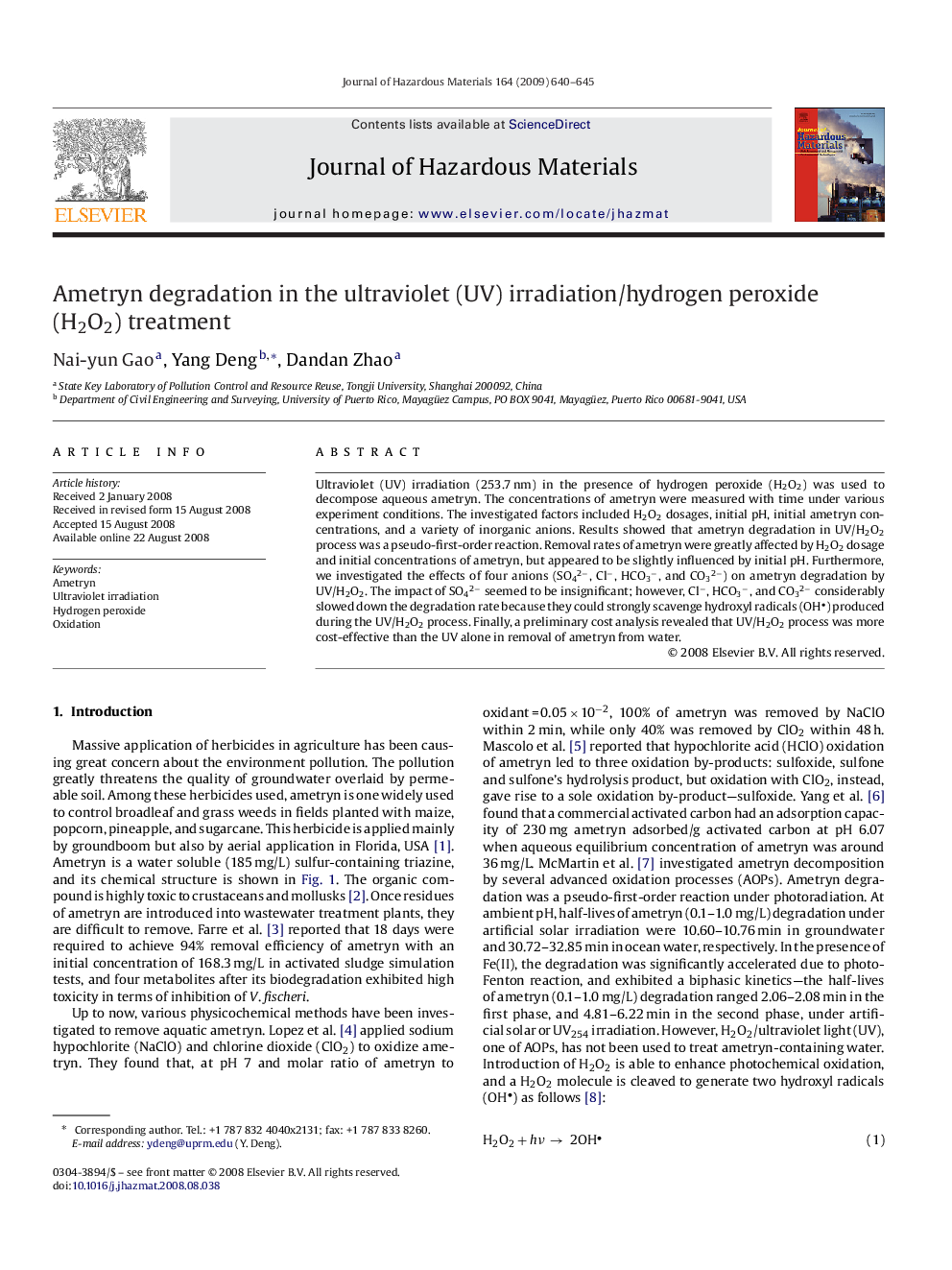| Article ID | Journal | Published Year | Pages | File Type |
|---|---|---|---|---|
| 582471 | Journal of Hazardous Materials | 2009 | 6 Pages |
Abstract
Ultraviolet (UV) irradiation (253.7Â nm) in the presence of hydrogen peroxide (H2O2) was used to decompose aqueous ametryn. The concentrations of ametryn were measured with time under various experiment conditions. The investigated factors included H2O2 dosages, initial pH, initial ametryn concentrations, and a variety of inorganic anions. Results showed that ametryn degradation in UV/H2O2 process was a pseudo-first-order reaction. Removal rates of ametryn were greatly affected by H2O2 dosage and initial concentrations of ametryn, but appeared to be slightly influenced by initial pH. Furthermore, we investigated the effects of four anions (SO42â, Clâ, HCO3â, and CO32â) on ametryn degradation by UV/H2O2. The impact of SO42â seemed to be insignificant; however, Clâ, HCO3â, and CO32â considerably slowed down the degradation rate because they could strongly scavenge hydroxyl radicals (OH) produced during the UV/H2O2 process. Finally, a preliminary cost analysis revealed that UV/H2O2 process was more cost-effective than the UV alone in removal of ametryn from water.
Related Topics
Physical Sciences and Engineering
Chemical Engineering
Chemical Health and Safety
Authors
Nai-yun Gao, Yang Deng, Dandan Zhao,
